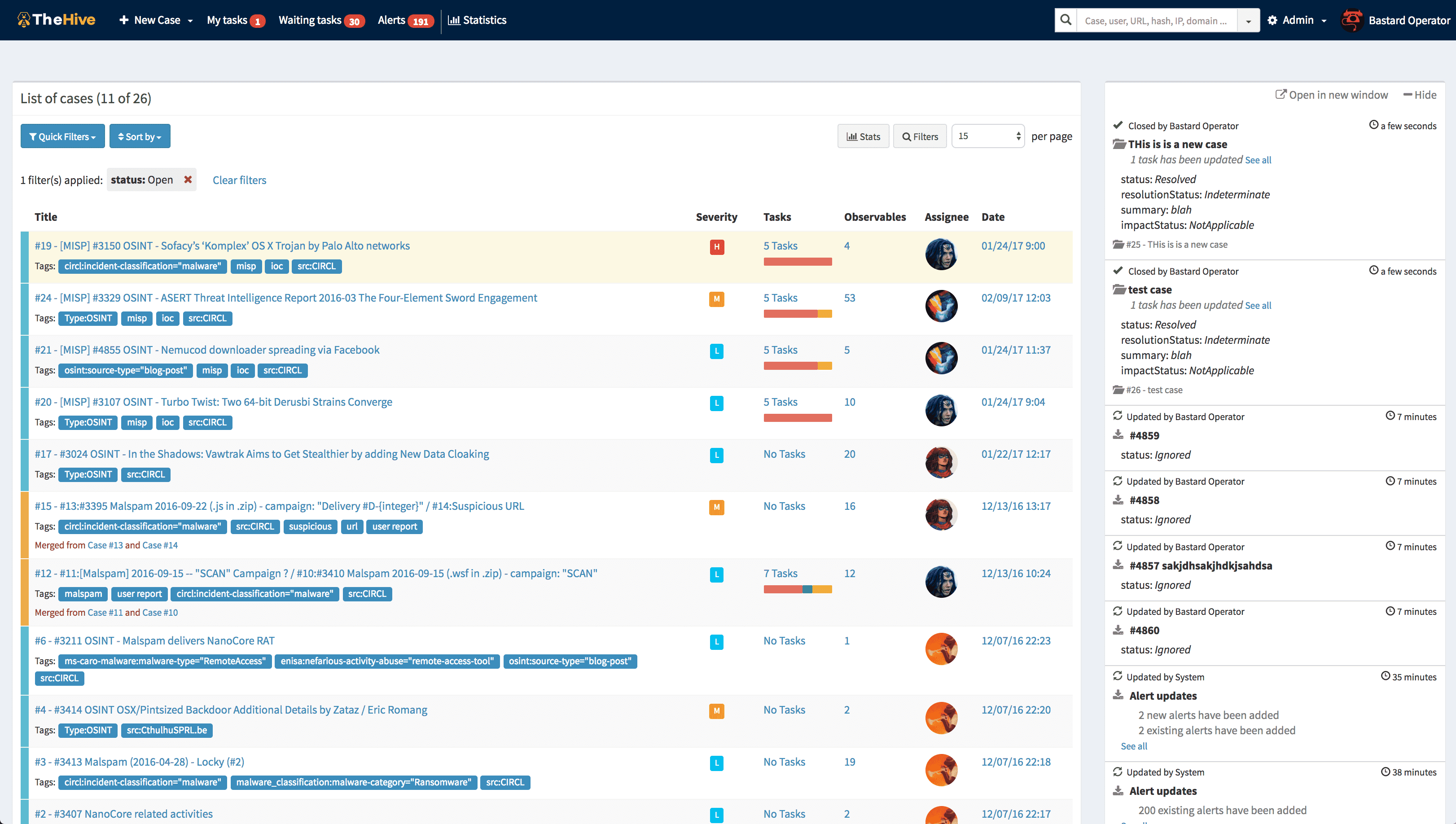TheHive v4.1.24 released: Open Source and Free Security Incident Response Platform

TheHive is a scalable 3-in-1 open source and free Security Incident Response Platform designed to make life easier for SOCs, CSIRTs, CERTs, and any information security practitioner dealing with security incidents that need to be investigated and acted upon swiftly. It is the perfect companion to MISP. You can synchronize it with one or multiple MISP instances to start investigations out of MISP events. You can also export an investigation’s results as a MISP event to help your peers detect and react to attacks you’ve dealt with. Additionally, when TheHive is used in conjunction with Cortex, security analysts and researchers can easily analyze tens if not hundreds of observables.
Collaborate
Collaboration is at the heart of TheHive. Multiple analysts can work on the same case simultaneously. For example, an analyst may deal with malware analysis while another may work on tracking C2 beaconing activity on proxy logs as soon as IOCs have been added by their coworker. Using TheHive’s live stream, everyone can keep an eye on what’s happening on the platform, in real-time.
Elaborate
Within TheHive, every investigation corresponds to a case. Cases can be created from scratch or from MISP events, SIEM alerts, email reports, and any other noteworthy source of security events.
Each case can be broken down into one or more tasks. Instead of adding the same tasks to a given type of case every time one is created, analysts can use TheHive’s template engine to create them once and for all. Case templates can also be used to associate metrics to specific case types in order to drive the team’s activity, identify the type of investigations that take significant time, and seek to automate tedious tasks.
Each task can be assigned to a given analyst. Team members can also take charge of a task without waiting for someone to assign it to them.
Tasks may contain multiple work logs that contributing analysts can use to describe what they are up to, what was the outcome, attach pieces of evidence or noteworthy files, and so on. Logs can be written using a rich text editor or Markdown.
Analyze
You can add one or hundreds if not thousands of observables to each case you create. You can also create a case out of a MISP event. TheHive can be very easily linked to one or several MISP instances and MISP events can be previewed to decide whether they warrant an investigation or not. If an investigation is in order, the analyst can then add the event to an existing case or import it as a new case using a customizable template.
Thanks to TheHive4py, TheHive’s Python API client, it is possible to send SIEM alerts, phishing and other suspicious emails and other security events to TheHive. They will appear in its Alerts panel along with new or updated MISP events, where they can be previewed, imported into cases or ignored.
TheHive has the ability to automatically identify observables that have been already seen in previous cases. Observables can also be associated with a TLP and the source which provided or generated them using tags. The analyst can also easily mark observables as IOCs and isolate those using a search query then export them for searching in a SIEM or other data stores.
Analysts can analyze tens or hundreds of observables in a few clicks by leveraging the analyzers of one or several Cortex instances depending on your OPSEC needs: DomainTools, VirusTotal, PassiveTotal, Joe Sandbox, geolocation, threat feed lookups, and so on.
Security analysts with a knack for scripting can easily add their own analyzers to Cortex in order to automate actions that must be performed on observables or IOCs. They can also decide how analyzers behave according to the TLP. For example, a file added as observable can be submitted to VirusTotal if the associated TLP is WHITE or GREEN. If it’s AMBER, its hash is computed and submitted to VT but not the file. If it’s RED, no VT lookup is done.
Changelog v4.1.24
Fixed bugs:
- [Bug] All analyzers become unavailable when an analyzer is updated #2420
Download && Use
Copyright (C) 2017-2018 Nabil Adouani
Copyright (C) 2014-2018 Thomas Franco
Copyright (C) 2014-2018 Saâd Kadhi
Copyright (C) 2014-2018 Jérôme Leonard







